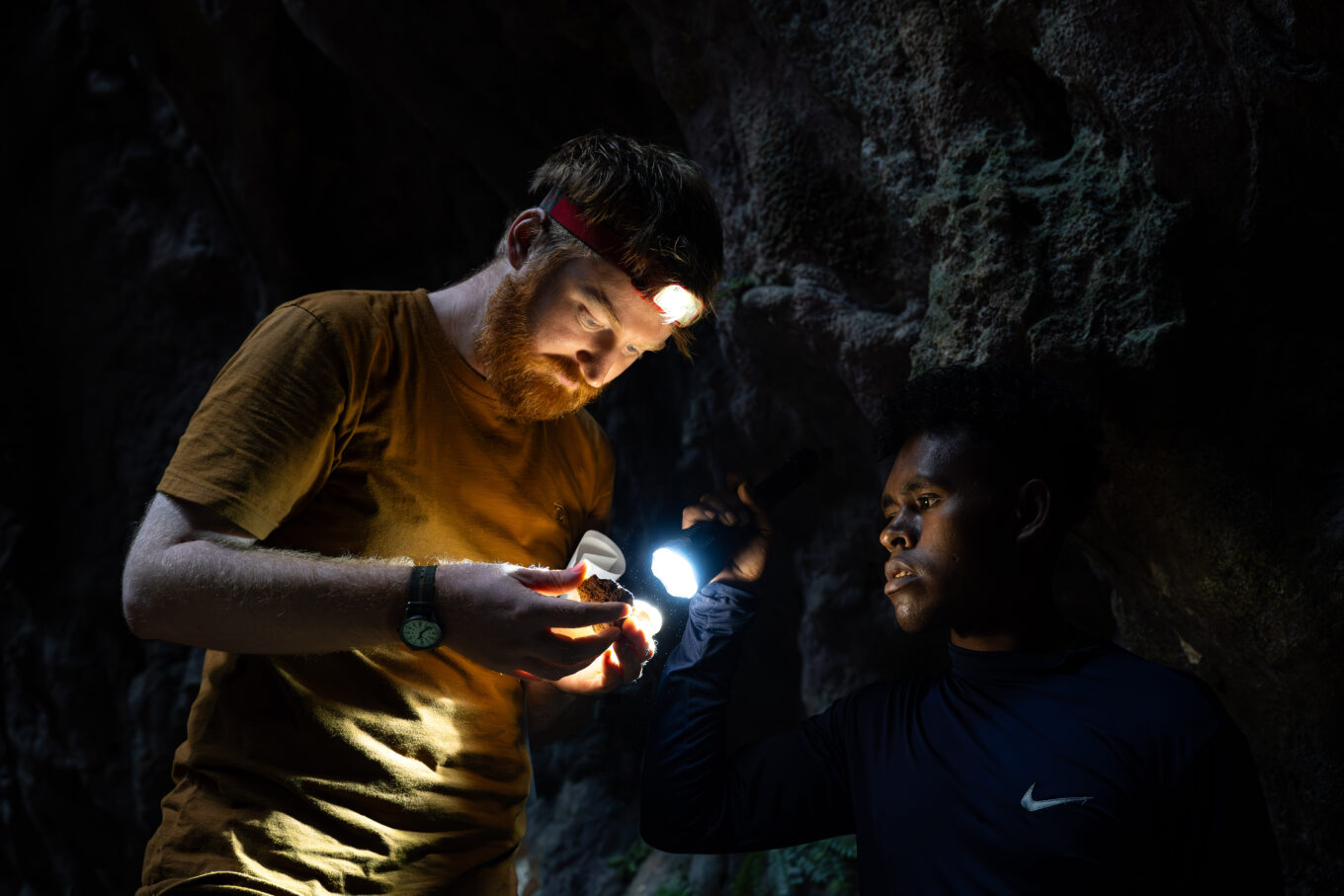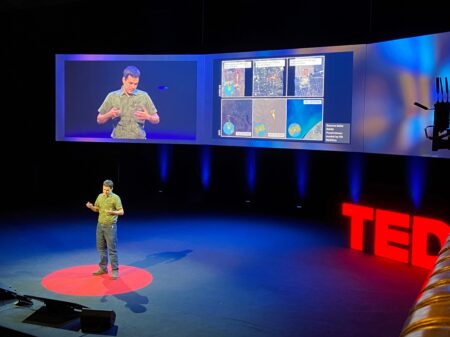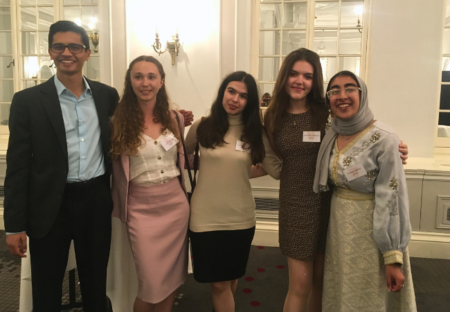In the summer of 2023, Dr Dylan Gaffney undertook archaeological fieldwork in the Raja Ampat archipelago of Indonesian Papua. Literally meaning the ‘four kings,’ the four Raja Ampat islands are located just off the northwest coast of New Guinea and are home to the world’s highest marine biodiversity as well as a plethora of endemic land animals amongst dense tropical forests, from tree dwelling cuscus to monitor lizards, large rodents to birds-of-paradise.
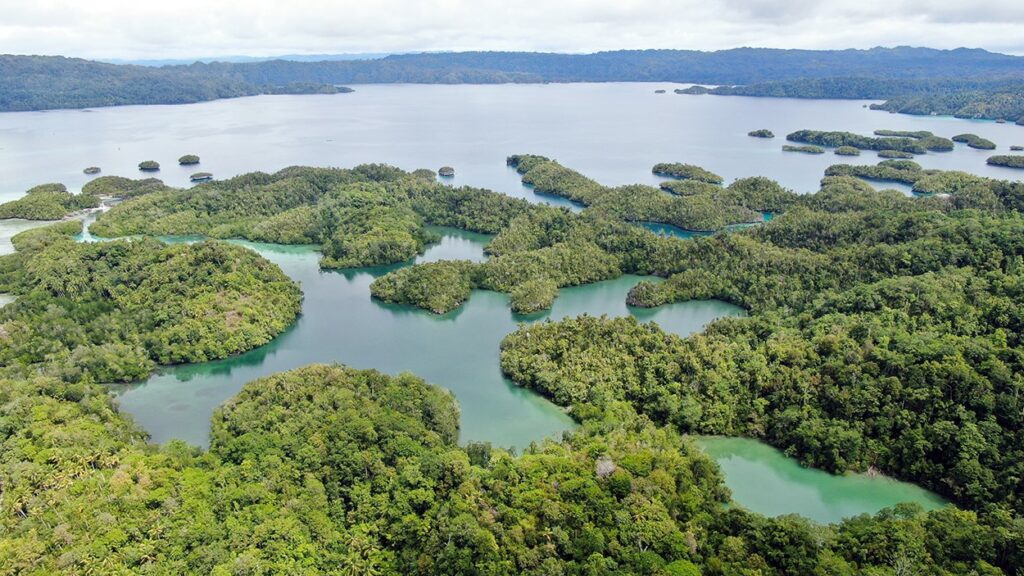
Apart from being biogeographically significant, these islands are strategically located at the end of an ancient voyaging pathway which led from Asia to the now-submerged continent of Sahul. Until about 8,000 years ago, Sahul connected present day Australia to New Guinea, but as sea levels rose at the end of the last Ice Age, the two landmasses became divided.
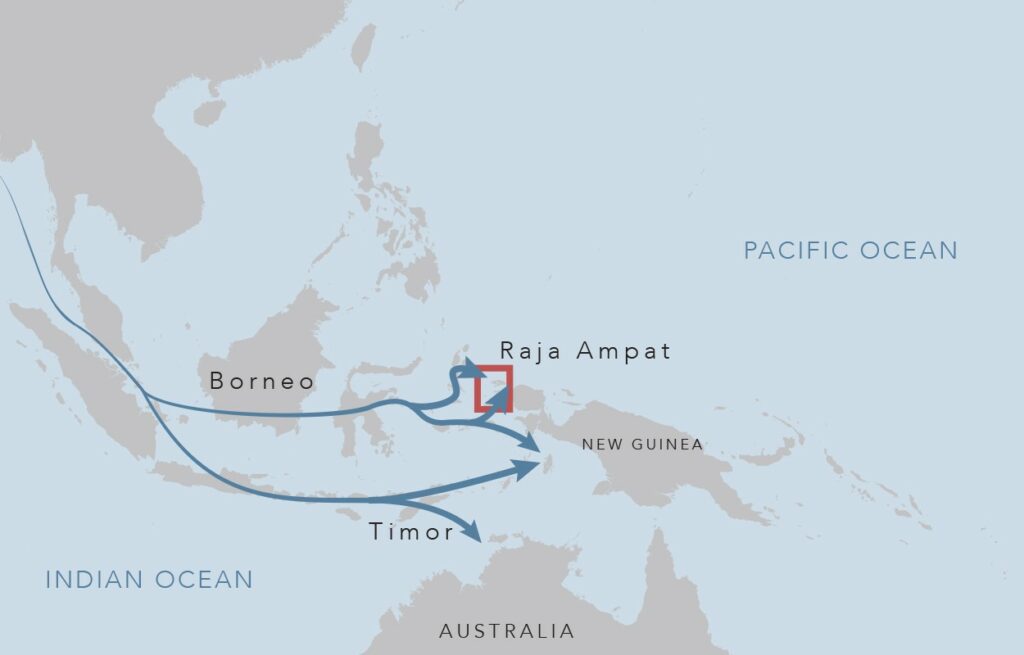
The world’s very first seafarers rafted along this route, passing through numerous small islands like Raja Ampat before reaching Sahul; just how these humans adapted to their new and challenging island environments, and how they began to alter these ecologies, are lingering questions which lie at the heart of the Raja Ampat Archaeological Project.
The 2023 season was led by Dr Dylan Gaffney, alongside local collaborators Professor Daud Tanudirjo and Dr Marlin Tolla, and was funded by the British Academy and the Boise Trust. It involved the team spending two months surveying for unknown archaeological sites under the canopy and excavating within large cave sites. Excavators included Indonesian archaeologists, international specialists from Australia and New Zealand, students from the United Kingdom, and local field assistants from the Raja Ampat community. The team opened a 6 x 2 m excavation at one cave known as Mololo, a large system of chambers reaching 100 m deep, home to several species of megabats.
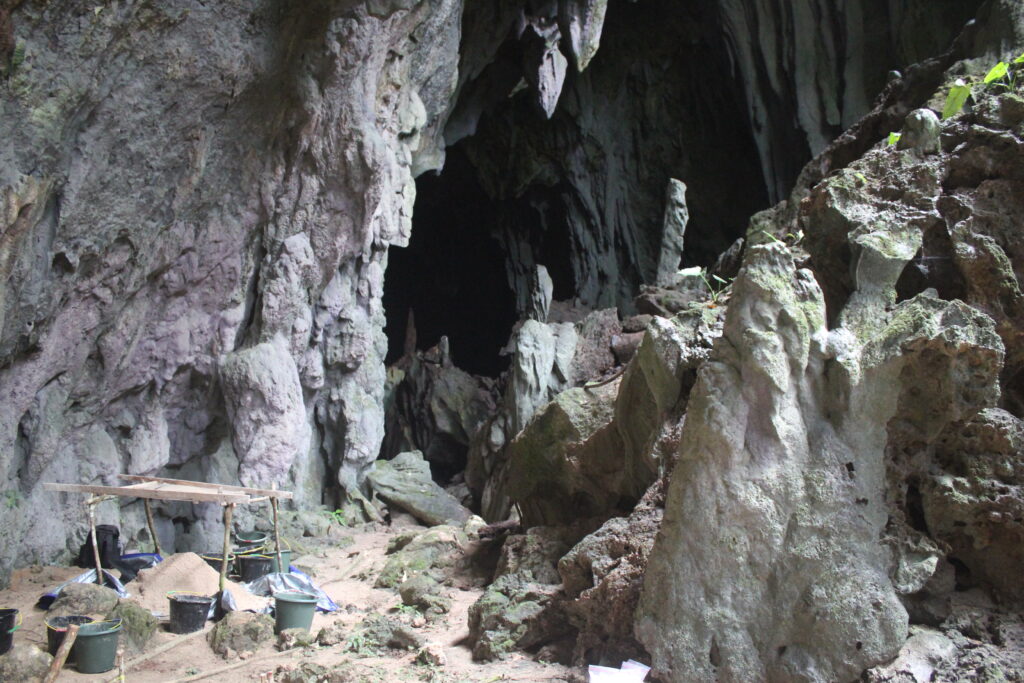
Digging down into a series of clay and fire ash deposits, the excavators located stone artefacts as well as animal bones discarded by the humans that occupied the site in the past. Previous radiocarbon dating by the team at the site has shown that the cave was initially occupied during the last Ice Age, sometime before 50,000 years ago. Ongoing artefact analyses and radiocarbon dating at Oxford aims to resolve exactly when people first reached the islands, and how their tool making and foraging behaviours changed over tens of millennia whilst living amongst these island rainforests.
While in the islands, the team also worked with the Raja Ampat community to promote cultural heritage through public lectures about the archaeological project in local villages. They also provided the community with copies of an Indonesian-language book describing the main findings of the Raja Ampat Archaeological Project so far. The design and printing of these community books was undertaken in Oxford and funded by the Evans Fund. This kind of community engagement is essential to ensuring that the flow of knowledge between researchers and local stakeholders is a two-way process.
The project will expand in scope from 2024–2025, funded by a National Geographic Meridian Grant. This next phase of the research will bring together a multidisciplinary team of archaeologists, social anthropologists, and zoologists to uncover how ancient humans persistently made their livelihoods within these tropical worlds, over tens of thousands of years. The team will use these deep histories to better understand the way people manage their environments in the present, as well as possible future directions for conservation in these incredibly diverse, but also very fragile, ecologies.
For further information about the project, see www.raja-ampat-arch.com
